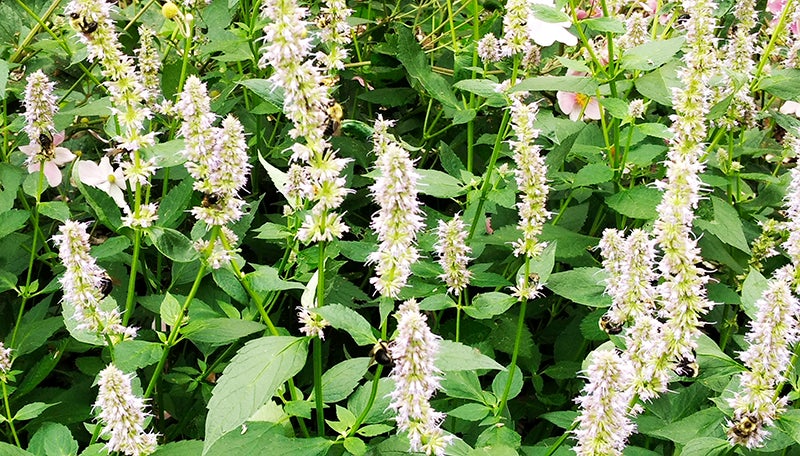Shelley Pederson: A magazine arrives just in time
Published 9:00 am Saturday, January 25, 2020

- Agastache blue fortune with bees. - Shelley Pederson/Albert Lea Tribune
The Perennial Buzz by Shelley Pederson

Shelley Pederson
Anyone who thinks gardening begins in the spring and ends in the fall is missing the best part of the year, for gardening begins in January with the dream: hybrid horticulture.
Breck’s Lily Lovers, 23 new varieties; buy now, pay later. Quite the magazine to receive on a cold and blustery day. I love lilies. The fragrance of the orientals, masses of blooms and getting orange pollen on my nose and clothing.
I remember the schoolhouse I grew up in. Mom planted lilies in a long narrow bed by the house. They completely filled the space with vibrant orange, covered in black freckles. Stalks of leaves wrapped around like a spiral staircase. For 4-H I planted snapdragon seeds amongst them. Asiatic lilies are probably the easiest of the lilies to grow and great for beginning gardeners. They seldom require staking and are very hardy. They grow well in full sun to dappled shade. Not as fragrant as oriental lilies, but are long-lasting, striking beauties in bouquets.
Asiatics grow from bulbs and can multiply by both bulbs and seed. You will find the bulbs in garden centers in the fall and even in the spring. Asiatic lilies need a cold dormant season to get the largest blooms. Potted lilies are often available during the summer at nurseries.
They are great to naturalize along wooded areas and will grow in most well-drained soils. Unfortunately, deer do like lily blooms, so you may want to treat the area around them with deer repellent or Milorganite. I plant my lilies with bone meal and worm castings for more prolific blooms. The best thing is that Asiatics come in dwarf — 10 to 5 inches — as well as carpet border lilies and doubles, in bold reds, yellows, whites, oranges and pinks. Forever susan is a popular 36-inch lily that is a deep orange with burgundy centers. Lollipop is a pink with white centers that grows 2 to 3 inches tall. Mine usually have anywhere from 8 to 10 blooms on a single stalk. Nettie’s pride is a dark purple, almost black beauty with white tips. They grow in a mass behind my crane’s bill, with allium and coneflowers intermixed.
Another favorite A-list perennial is the agastache, blue fortune. Agastache is a zone five perennial and I’ve had it in my garden for over 10 years. It is very late to break dormancy, typically returning to life in June. It’s common name is giant hyssop. Rub the leaves and enjoy the minty black licorice fragrance that is deer and rabbit resistant. The plant grows quite tall, between 3 to 4 feet. Country blue spike flowers bloom most of August and September. Bees are crazy for them. I’ve seen bees literally curled up in the blooms. The nectar-rich blooms are attractive to butterflies. I have mine planted in full, hot sun. The plant is drought hardy once established.
Blue star amsonia was featured this last summer at the Minnesota Landscape Arboretum. This is another large plant that grows in a mound 2 to 3 feet tall and wide. Clusters of perfect little blue stars bloom late spring and early summer. It is a good idea to cut the plant back to about 6 inches after blooming to keep the plant well shaped and upright. In the cool of fall the delicate foliage turns a golden yellow. Mulch amsonia well, as it likes some moisture and can even be planted in rain gardens. Amsonia does best in full sun with some late afternoon shade. Amsonia is attractive to butterflies and somewhat resistant to deer. There is a dwarf variety, but I have yet to see it in a garden center. I have used them in bouquets and even after blooming, the foliage adds interest to arrangements. Amsonia is another plant that can be naturalized along woodlands and certainly a must have in the cottage garden.
Feel free to share with me some of your favorites. You can also ask me any gardening questions you may have.
Shelley Pederson is a perennially busy master gardener, lover of nature and student of life.




